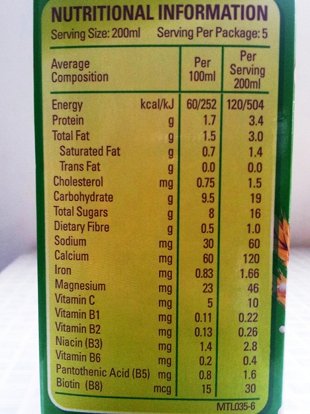Confronting Nutrition Labels
By Joanne Yeo - Thursday, Oct 25, 2012
You see them every day when you shop at the supermarket, order a can of drink at the coffee shop and even on your breakfast cereal boxes. But how often do you pay attention to them? Some of you may have tried and gave up after the third line or realised just how small the small print was. Squinting didn’t help.
Reading food label and nutrition facts can be a pain, but it is as important and necessary as walking ten flights down the stairs when the building is on fire.
Before you jump into reading the full list of numerical values and food science jargons, Melissa Ho, dietician at Tan Tock Seng Hospital, recommends starting off easy by looking at Health Promotion Board (HPB) healthier choice symbols such as “Lower in Sugar” and “Lower in Saturated Fat”. Product companies might also have their own food claims such as “Low Sugar” or “Low Fat” which are often made in comparison with the company’s own formulation of the product. However, she adds that products with such labels or claims might not be any than those without it. It’s about perception and facts. For example, a drink can be now re-packaged as ‘low in sugar’ (e.g. 25g/ serving) if it is compared to its original product (30g/ serving). However, this drink may have more sugar than their competitor’s products which have no such labels.
She says there are two ways to read and use the information of the nutrition label: (1) To calculate the nutrient content that one will be getting from the food and (2) To make nutrient content comparison with other food products.
For the former, use the values of nutrients in the “per serving” column (e.g. energy, protein, fat, carbohydrate, etc.) to plan for meals that will meet your intake needs, bearing in mind each individual’s requirements are different. For instance, a sportsperson in training will need a higher intake of protein as compared to another individual who is more sedate.
For the latter, nutrient content comparison between food products can be made by comparing the ‘’per 100g” or “per 100ml” nutrient values. This is useful when you need to select healthier choices.
Food products that are imported from countries such as America and Australia might also have a “percentage daily values”- useful information for the recommended daily intake (RDI) of vitamins and minerals, says Melissa. She gives an example: If you are looking at increasing your calcium intake, the figures indicated will tell you just how much you need or are getting in relevance to your allowed intake.
The above information may seem to be quite a mouthful to digest for beginners and may make you extend your grocery shopping trip by an extra 20 minutes initially, but with enough practice, reading labels will eventually become a breeze and make you a more informed consumer. In general, Melissa says the nutrition information panel serves to help consumers make quick and informed healthier choices. Are you ready to eat and shop smarter?



